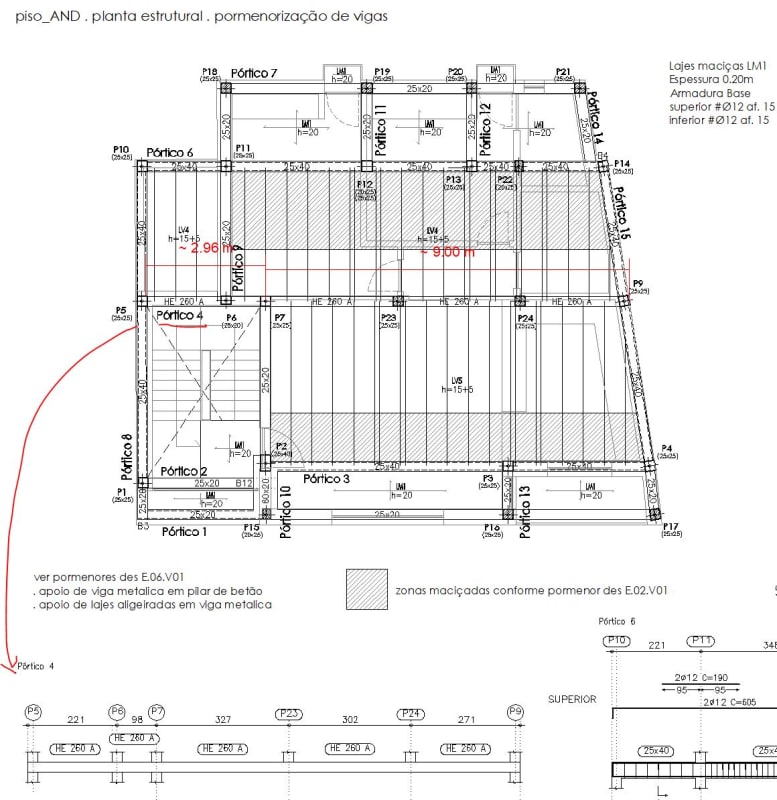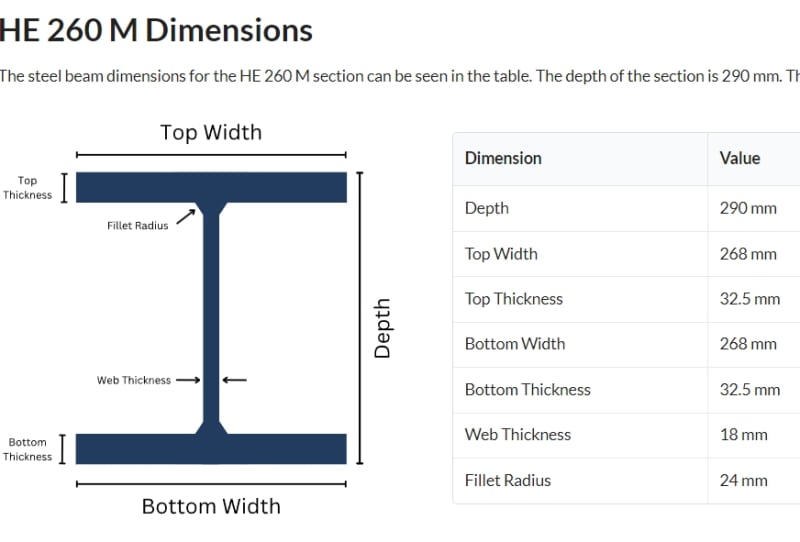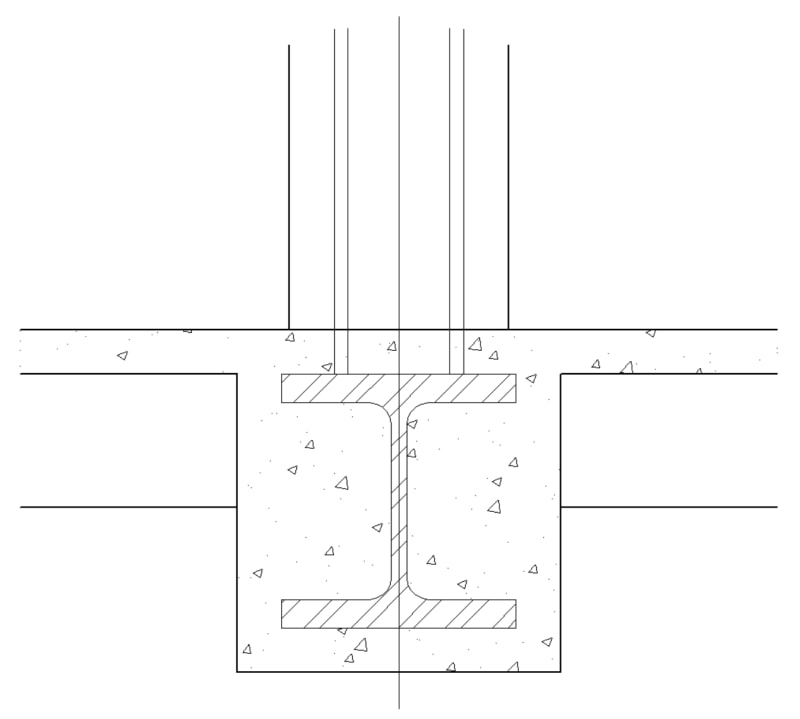EdgarPeriera
Civil/Environmental
Good Morning all,
Please help me with the image bellow. The engineer Is proposing a steel column HEA260 at "Pórtico4". The Columns P5, P6, P7, P23, P24 and P9 are ALL CR columns with 250x250mm. As a constructer I have a great deal of difficulty accepting this solution but the engineer was quite insulting and said that there is no problem with this solution. I requested construction details that he didn't provide so far. I do not like to question the technical knowledge of the engineering but I've never done or seen something like that in 20 years of construction. My particular concern is with the columns P23 and P24 with no support underneath and the connection of the steel beam to the edge columns P5 and P9. This beam is at the second floor residential area with a flat concrete roof above. Could someone help me clarify this problem and probably elaborate a response to the engineer? Thank you very much for all your help.

Please help me with the image bellow. The engineer Is proposing a steel column HEA260 at "Pórtico4". The Columns P5, P6, P7, P23, P24 and P9 are ALL CR columns with 250x250mm. As a constructer I have a great deal of difficulty accepting this solution but the engineer was quite insulting and said that there is no problem with this solution. I requested construction details that he didn't provide so far. I do not like to question the technical knowledge of the engineering but I've never done or seen something like that in 20 years of construction. My particular concern is with the columns P23 and P24 with no support underneath and the connection of the steel beam to the edge columns P5 and P9. This beam is at the second floor residential area with a flat concrete roof above. Could someone help me clarify this problem and probably elaborate a response to the engineer? Thank you very much for all your help.





![[ponder] [ponder] [ponder]](/data/assets/smilies/ponder.gif)